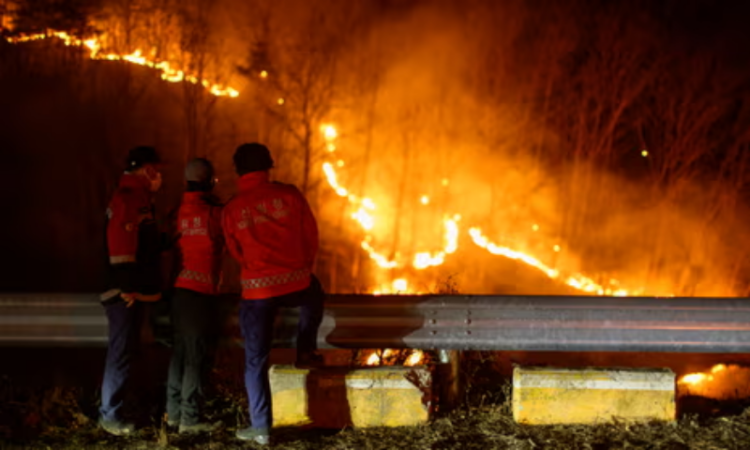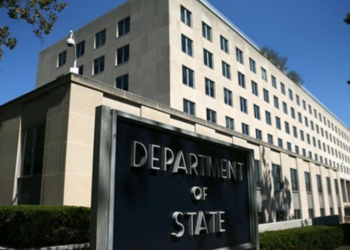Andong, South Korea, March 27, 2025: South Korea is grappling with its worst-ever wildfire disaster, as blazes that began in Uiseong County have more than doubled in size in just a day. At least 28 people have died, while historic temples and thousands of hectares of forest have been reduced to ashes.
More than 38,000 hectares (93,900 acres) have been scorched or are still burning, making this the largest single forest fire in South Korea’s history—surpassing the previous record of 24,000 hectares from a March 2000 fire.
“We are facing an unprecedented disaster with numerous casualties due to the rapid spread of these wildfires,” said Acting President Han Duck-soo during a government response meeting.
Over 120 helicopters have been deployed to combat the infernos, as the country’s mountainous terrain makes aerial firefighting crucial. A helicopter pilot died on Wednesday after crashing while battling the flames.
Fanned by strong winds and dry conditions, the fires spread 50 kilometers (30 miles) eastward in just 12 hours, reaching Yeongdeok County near the coast.
Although brief rainfall was reported on Thursday evening, officials say it was too little to extinguish the fires but could help slow their spread. Similar light rain is forecast for Friday.
The wildfires have devastated entire communities in North Gyeongsang Province, destroying homes, forests, and historic landmarks.
Authorities are on high alert to protect UNESCO World Heritage sites, including Hahoe Folk Village and the Byeongsan Confucian Academy in Andong, as flames inch closer.
The fires have already severely damaged other cultural treasures, including Gounsa Temple in Uiseong, built in 681 AD.
“The buildings and relics preserved by Buddhist monks for over 1,300 years are now gone,” said Deungwoon, head of Gounsa Temple.
Experts warn that climate change is making wildfires more frequent and extreme worldwide. According to Climate Central, higher temperatures fueled by human-caused climate change have intensified seasonal dryness, turning landscapes into fire-prone zones.
With conditions ripe for future disasters, South Korea now faces the urgent challenge of strengthening wildfire prevention and response strategies.








